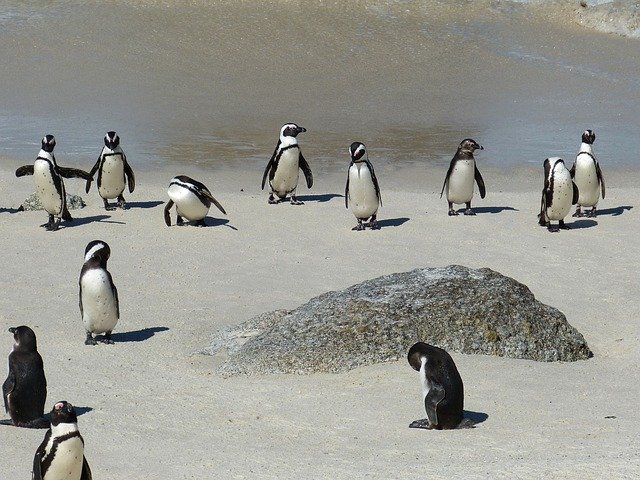"Survival Strategies of Penguins in Harsh Environments: A Fascinating Look at How These Adorable Birds Adapt to Life in Antarctica"

Survival Strategies of Penguins in Harsh Environments
Introduction
Penguins, with their distinctive black and white plumage and comical waddle, are some of the most iconic and beloved birds in the world. These fascinating creatures have adapted to life in some of the harshest environments on Earth, particularly in Antarctica. In this post, we will explore the survival strategies that penguins employ to thrive in such extreme conditions.
Adaptations for Cold Weather
One of the most remarkable adaptations of penguins is their specialized plumage, which helps them stay warm in frigid temperatures. Penguins have a layer of dense, waterproof feathers that trap air close to their bodies, providing insulation against the cold. This layer of air acts as a barrier between the penguin's skin and the icy water, helping them maintain their body temperature.
Efficient Swimming and Diving
Penguins are highly adapted for life in the water, where they spend the majority of their time hunting for food. Their streamlined bodies and flipper-like wings allow them to move through the water with incredible speed and agility. Penguins can dive to impressive depths in search of fish, squid, and other prey, thanks to their ability to hold their breath for extended periods and their efficient oxygen utilization.
Huddling Behavior
To survive the extreme cold and harsh winds of Antarctica, penguins have developed a unique strategy known as huddling. When temperatures drop and the wind chill becomes unbearable, penguins will gather together in large groups, huddling closely to share body heat. This collective warmth helps them stay insulated and protected from the elements, allowing them to survive the harsh Antarctic winters.
Feeding Strategies
Despite the challenging conditions of their environment, penguins have evolved effective feeding strategies to sustain themselves. Many penguin species are skilled hunters, using their keen eyesight to spot prey underwater. Some species, like the emperor penguin, can dive to incredible depths to catch fish and squid, while others rely on krill and other small crustaceans as their primary food source.
Conclusion
The survival strategies of penguins in harsh environments like Antarctica are a testament to the incredible adaptability and resilience of these adorable birds. From their specialized plumage and efficient swimming abilities to their huddling behavior and feeding strategies, penguins have evolved a range of adaptations that allow them to thrive in one of the most challenging environments on Earth. Studying these fascinating creatures not only provides insight into their remarkable biology but also highlights the importance of conservation efforts to protect their fragile habitats.
